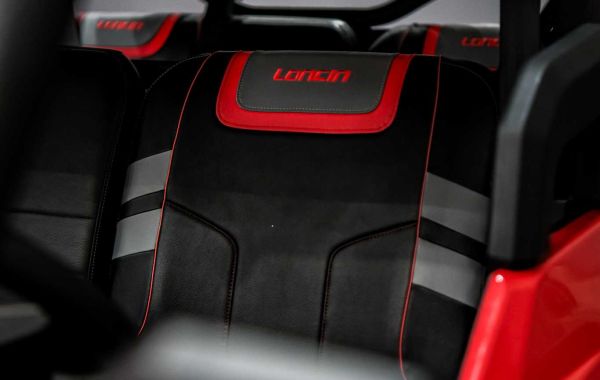ATVs and UTVs are both off - road vehicles but differ in design and use. ATVs are lightweight and agile for personal fun and light tasks, while UTVs resemble small cars, suitable for multiple passengers and heavy work, usually more comfortable and safer.
Basic Structure and Design
ATV: Typically has three or four wheels, with a straddle seating position, handlebar steering, and a compact, lightweight body. Its tires are usually kept at lower pressure to enhance traction on rough terrain. The wheelbase is relatively short, giving it greater agility but also making it less stable at high speeds. The vehicle lacks a cabin, though some models may feature a roll bar.
UTV: Resembles a small car or truck, with a standard four-wheel base and a longer wheelbase, providing better stability. It features a car-like seating arrangement, typically offering side-by-side bucket seats or bench seats that can accommodate 2 to 6 passengers. Steering is done via a steering wheel, and foot pedals control acceleration and braking. Many UTVs come with a cabin, which may include a roof, doors, and even air conditioning. Some models also have roll cages and seat belts for enhanced safety.
Performance and Handling
ATV: Known for its quick and nimble handling, capable of traversing various terrains such as mud, rocks, and steep slopes. Its compact size allows it to navigate narrow trails and tight spaces easily. However, its maximum speed is generally lower than that of UTVs, typically ranging from 25 mph to 50 mph. Acceleration is usually controlled by a thumb throttle, though some models can be modified to use a twist throttle. Braking can be achieved through brake handles or foot pedals, depending on the design.

UTV: Faster and more powerful than ATVs, with top speeds varying depending on the model, reaching up to 80-85 mph. However, due to its larger size and weight, it is less maneuverable in tight spaces compared to ATVs. Its handling is more akin to a car, making it easier to operate for those accustomed to driving cars. The four-wheel drive system and robust suspension provide excellent off-road capability.

Usage Scenarios
ATV: Primarily used for recreation, such as trail riding, racing, and off-road adventures. Its compact size and agility make it ideal for navigating narrow trails and rough terrain. Additionally, some utility ATVs can be used for light work tasks, such as transporting tools, towing small trailers, or plowing snow.
UTV: Designed more for utility purposes, excelling in work-related tasks like hauling equipment and supplies on farms, ranches, construction sites, and other locations where trucks may be impractical. It is also suitable for group activities such as family outings, hunting, and camping, offering ample cargo space and passenger capacity. Moreover, UTVs are increasingly being adopted in non-agricultural settings, such as schools for transporting water jugs, sports equipment, and occasionally athletes.
Comfort and Convenience
ATV: Lacks the comfort features of UTVs, with riders sitting in an upright position on a straddle seat, exposed to the elements. Long-duration rides or travel in harsh weather conditions may be less comfortable.
UTV: Provides greater comfort with features like bucket seats, seat belts, and a cabin. Some models even offer air conditioning, making it easier to handle extended trips and adverse weather.
Load Capacity and Towing Ability
ATV: Has limited load capacity, typically equipped with front and rear cargo racks capable of carrying smaller loads. Its towing capacity is generally up to 1,000 lbs.
UTV: Features substantial cargo space and towing capacity, with some models capable of towing up to 3,000 lbs, making it suitable for heavy-duty tasks.
Safety Features
ATV: Lacks built-in safety equipment like roll cages and seat belts. Riders are advised to wear protective gear such as helmets, gloves, and boots. Its shorter wheelbase and higher center of gravity increase the risk of rollovers.
UTV: Comes standard with occupant restraints (seat belts) and often includes roll cages. Some models also offer features like windshields, providing better protection for passengers.
Customization Options
ATV: While customizable, options are relatively limited, mainly focusing on enhancements like suspension and tires.
UTV: Offers extensive customization possibilities. Users can modify suspensions, add fog lights, install fully enclosed cabins, and more to suit their functional and comfort needs.
Cost
ATV: Generally more affordable, with lower purchase and maintenance costs.
UTV: Tends to be pricier, especially after customization. Its higher cost stems from its larger size, greater power, and advanced features.
In summary, ATVs are ideal for users seeking a thrilling, solo off-road experience and agile handling on rugged terrain. UTVs, on the other hand, are better suited for group activities, work tasks, and comfortable off-road travel. The choice between the two depends on the user's specific needs and usage scenarios.









